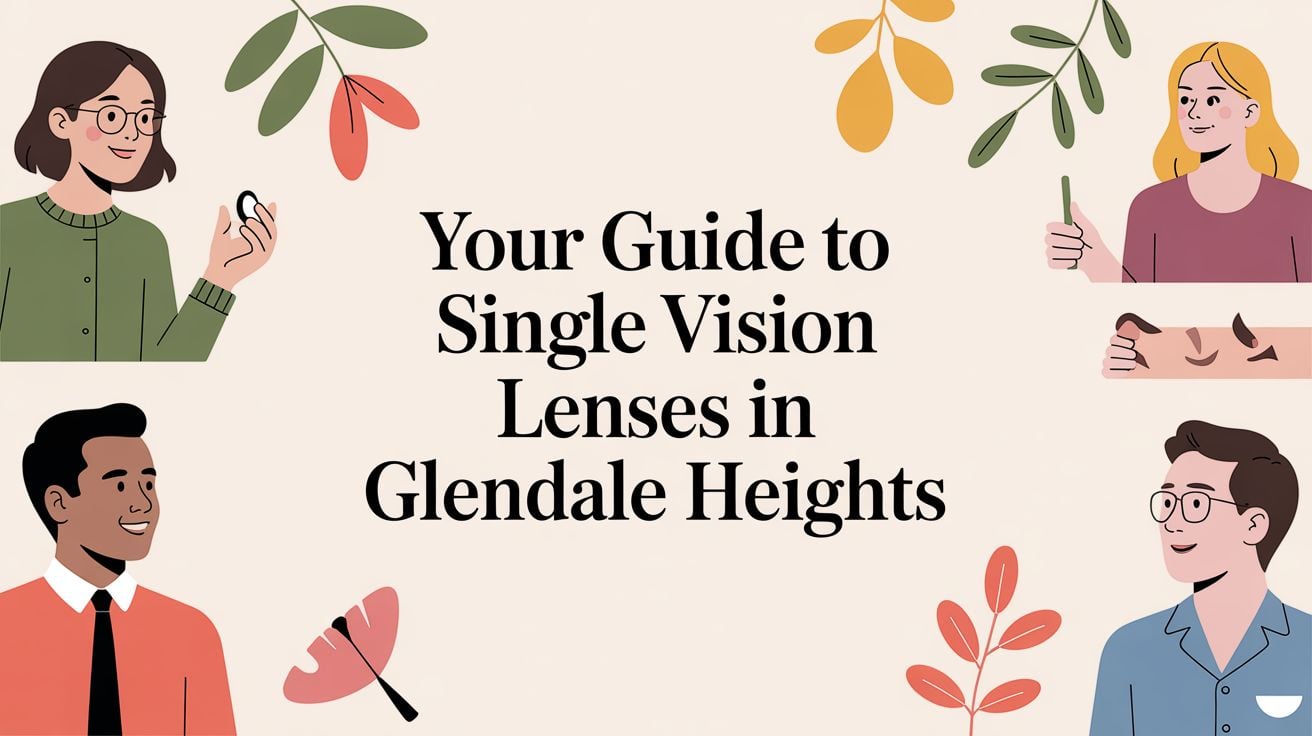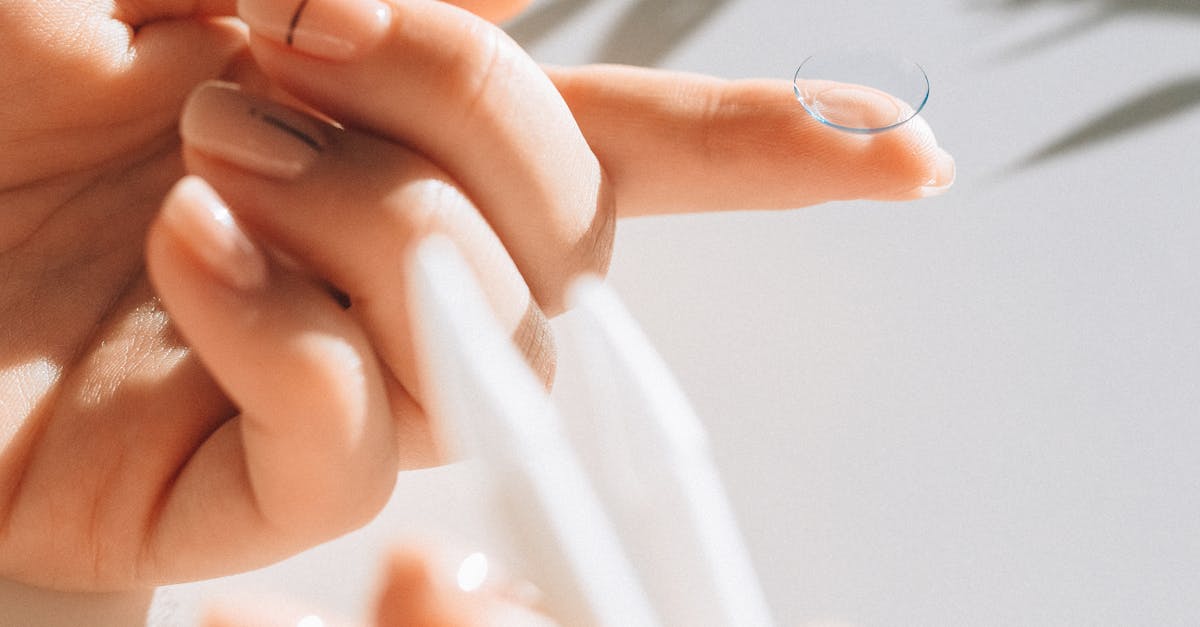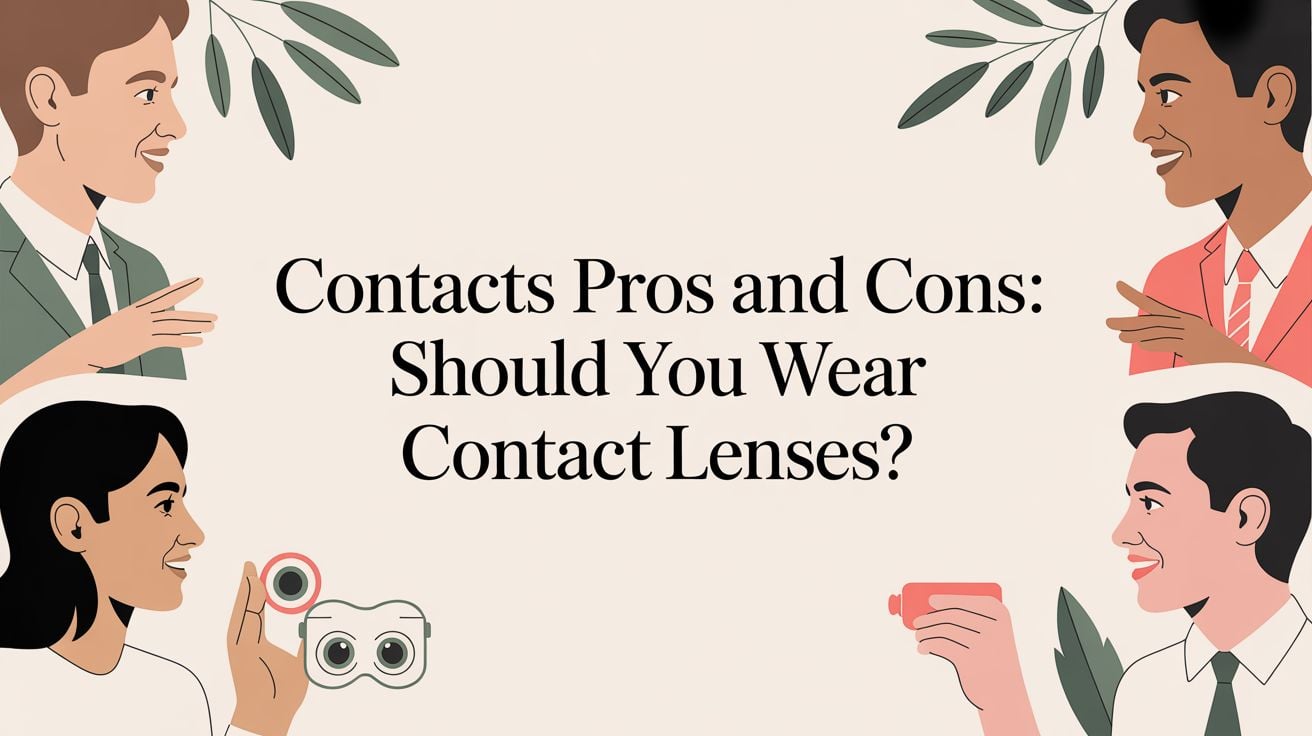If you're looking for the best contact lenses for dry eyes, you'll want to focus on specialized daily disposables. These are typically made from advanced materials like silicone hydrogel. Modern lenses like these are specifically engineered with technologies to hold in moisture and let plenty of oxygen through, which makes a world of difference for anyone who’s struggled with contacts in the past. At iDoctor, our optometry boutique here in Glendale Heights, we specialize in matching patients with the perfect lens to combat dryness and irritation.
Finding Comfortable Vision in Glendale Heights
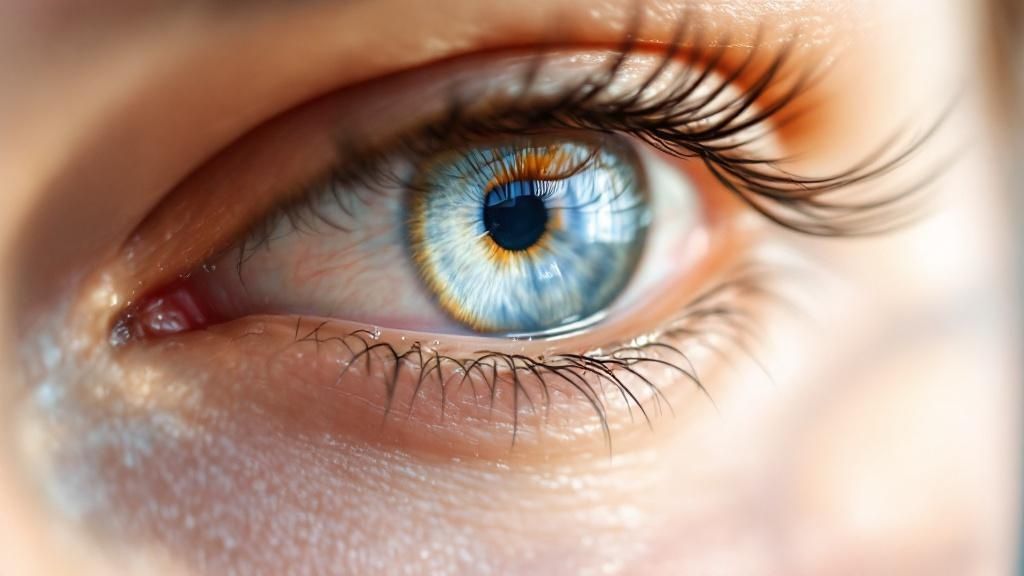
It's a familiar story: you want the freedom of contact lenses, but the constant irritation from dry eyes makes it feel like a daily battle. If this sounds like you, know that you're not alone and that it doesn't have to be this way. At iDoctor, our high-end optometry boutique here in Glendale Heights, we tackle this exact problem every day.
We talk to so many patients, many driving over from Carol Stream, who've almost given up on contacts. They're convinced their eyes are just too dry. The good news is that lens technology has come an incredibly long way. It’s all about looking past the standard, off-the-shelf options and exploring lenses built specifically for the challenges of a dry eye.
Why Specialized Lenses Matter for Patients in Carol Stream
A standard contact lens can act like a tiny sponge on the eye, interfering with the tear film—that delicate layer of moisture that keeps your eye's surface protected. When that film is disrupted, you get that gritty, red, and irritated feeling that can ruin your day. Lenses designed for dry eyes work differently to prevent this.
They excel in two key areas:
- Moisture Retention: Many have wetting agents built right into the material, or they're made from polymers that naturally bind to water. This keeps the lens surface slick and hydrated from morning to night.
- Oxygen Permeability: Healthy eyes need to breathe. Modern materials allow much more oxygen to reach the cornea compared to older lenses, which is crucial for comfort and long-term eye health.
"Many of our patients from Carol Stream are surprised to learn that the 'best' contact lens isn't a one-size-fits-all solution. It's about matching the right lens technology to your unique tear film and lifestyle, which is why a professional fitting is so important." – The iDoctor Team
From Discomfort to Clarity
The first step toward clear, comfortable vision is simply knowing that better options are out there. The old-generation lenses many people tried years ago just can't compete with today's designs. By getting to the root cause of contact lens-induced dryness, we can finally break that cycle of irritation.
This guide will walk you through the specific materials, brands, and technologies that make comfortable wear a reality. Getting a professional fitting for contact lenses in Glendale Heights is the only way to ensure the recommendation is truly personalized to your eyes. With the right lens, even people with sensitive, dry eyes can enjoy the convenience of contacts. It all starts with a detailed eye exam in Glendale Heights.
How Modern Contacts Combat Eye Dryness
To find the right contacts for dry eyes, you first have to understand what causes the problem in the first place. A contact lens rests directly on your eye, which can mess with the tear film—that thin, moist layer that keeps your eye comfortable and protected. When that film gets disrupted, you get that gritty, red, and irritated feeling so many of us know all too well.
Our optometrist often explains the tear film to patients as a three-layer sandwich: a slick, oily outer layer to stop evaporation, a watery middle layer for hydration, and a sticky inner layer that helps it all cling to your eye. A traditional contact lens can act like a sponge, soaking up the watery layer, or it can block the oily layer, leading to quick evaporation and discomfort. This is a common complaint, but thankfully, modern lens technology has some very clever solutions.
The Role of Water Content and Oxygen
Years ago, the thinking was simple: more water in the lens meant more comfort. While water content is definitely part of the equation, it’s a bit of a double-edged sword. A lens with extremely high water content can start to dry out during the day and, like a tiny sponge, begin pulling moisture from your eye to rehydrate itself. This can actually make dryness worse as the day wears on.
That’s where oxygen permeability enters the picture. Measured as Dk/t, this value tells us how much oxygen can pass through the lens material to reach your cornea. Your cornea needs a steady stream of oxygen to stay healthy and clear.
The secret isn't just one feature, but the harmony between them. Today's best lenses are engineered to stay moist on their own without stealing moisture from your eye, all while letting plenty of oxygen through.
Advanced Moisture-Retaining Technology
The real game-changer in recent years has been the creation of materials that actively fight dehydration. Instead of just being a passive container for water, these lenses have "wetting agents" or moisture-locking technologies built right in.
These innovations generally fall into a few key categories:
- Embedded Wetting Agents: Some lenses have moisturizing molecules woven directly into the lens material itself. With every blink, these agents are slowly released throughout the day, constantly refreshing the surface of the lens.
- Surface Treatments: Other lenses get a special surface coating that’s designed to mimic your natural tear film. These water-loving, or hydrophilic, surfaces are great at repelling protein and lipid buildups, which are notorious for causing irritation and dryness.
- Water Gradient Designs: One of the biggest breakthroughs is the water gradient lens. These have a silicone hydrogel core with a lower water content for maximum oxygen flow, but the surface transitions to almost 100% water. This creates a cushion of pure moisture between the lens and your eye, providing exceptional, lasting comfort.
The contact lens market is always innovating, especially when it comes to solving problems like dry eye. (Learn more about the contact lens market growth and its drivers). Knowing about these technologies is a fantastic first step, but it's also smart to explore other ways to manage eye discomfort. You might find our guide on top dry eye treatment options for fast relief helpful. Working with your eye doctor to explore these advanced options is the surest way to find the perfect match for your eyes.
Contact Lens Material Comparison for Dry Eyes
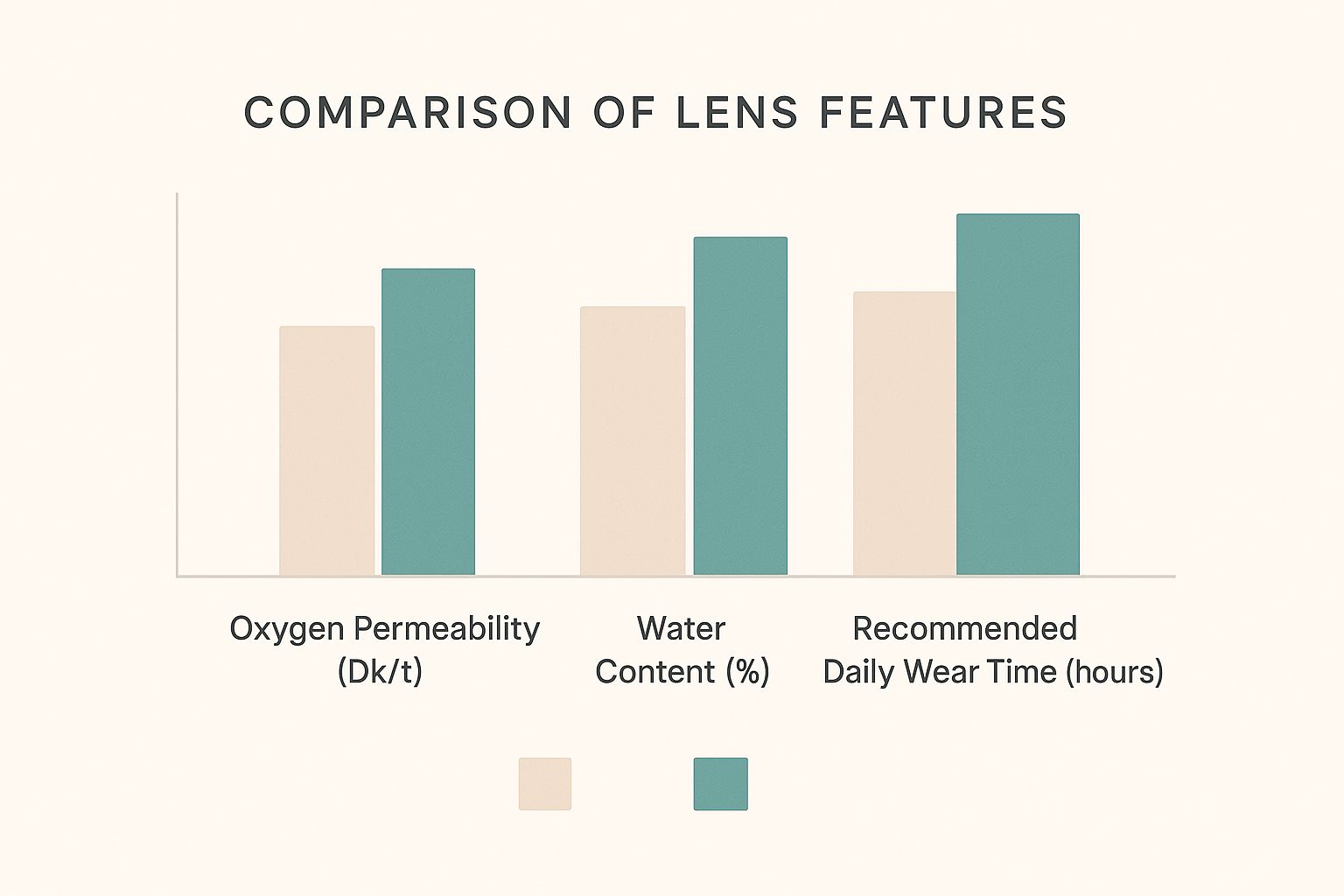
When you're dealing with dry eyes, choosing the right contact lens material isn't just a small detail—it's everything. This is where we move beyond a simple brand preference and get into the science of how a lens actually interacts with your eye's surface. The two heavyweights in the ring for dry eye sufferers are Silicone Hydrogel and modern Hydrogels.
Each material brings something different to the table, and the "best" one really boils down to your unique eyes and your daily life. A patient from Carol Stream spending all day in a dry, air-conditioned office has very different needs than, say, a local athlete who needs consistent comfort outdoors. At iDoctor, our entire philosophy is built around matching the lens technology to the person, not just the prescription on paper.
| Material Type | Key Technology | Primary Benefit for Dry Eyes | Ideal Wearer Profile | Considerations |
|---|---|---|---|---|
| Silicone Hydrogel | Silicone core allows high oxygen transmission; surface treatments add wettability. | Superior Oxygen Permeability. Reduces end-of-day redness and keeps the cornea healthy during long wear hours. | Office workers, heavy screen users, or anyone wearing lenses for 10+ hours a day. | Silicone is naturally water-repellent, so comfort depends heavily on the brand's specific surface moisture technology. |
| Modern Hydrogel | Bio-inspired materials designed to mimic the tear film and retain water. | Exceptional Moisture Retention. The lens holds onto its own water, preventing it from drying out and stealing moisture from your tears. | People whose primary complaint is lenses feeling "papery" or dry late in the day; those sensitive to silicone. | Generally lower oxygen transmission than silicone hydrogels, making them better suited for standard daily wear rather than overnight use. |
Ultimately, the choice between these materials is a perfect illustration of why a professional fitting is so important. It's a clinical decision balancing the need for oxygen against the need for inherent moisture, tailored specifically to your tear film and lifestyle.
Silicone Hydrogel: The Oxygen Powerhouse
Silicone hydrogel lenses earned their fame for one primary reason: superior oxygen permeability. They were a game-changer, allowing far more oxygen to reach the cornea than their predecessors. This is a huge win for long-term eye health, dramatically cutting down the risk of irritation and other complications from wearing contacts all day.
But there's a catch. Silicone itself repels water (it's hydrophobic). To solve this, manufacturers use sophisticated surface treatments and embed wetting agents directly into the lens material. This creates a silky, moist surface that keeps the lens from feeling scratchy as the hours tick by.
- Ideal User: Think about that office worker in Carol Stream, staring at a monitor for eight hours straight. That high oxygen flow is crucial for keeping their eyes feeling and looking good in a low-blink, demanding environment.
- Key Consideration: Not all moisture technologies are created equal. The specific wetting agent used varies from brand to brand, which is why trying a few is often necessary to find the one that feels just right on your eye.
Modern Hydrogels: The Masters of Moisture
While silicone hydrogels were chasing oxygen, modern hydrogels were busy perfecting moisture. These are not your old-school hydrogel lenses. Today's advanced materials are engineered to mimic the natural lipid layer of your tear film.
They typically start with a very high water content and, more importantly, are designed to hold onto that water all day long. This prevents the lens from drying out and starting to draw moisture from your eye—a common cause of late-day discomfort. It's simply a different strategy for tackling the same problem of dryness. If you want to learn more about the direct impact of dryness, our article explains how dry eye can affect your vision.
The debate between silicone hydrogel and modern hydrogel is a classic case of why a "one-size-fits-all" mentality just doesn't work in eye care. It’s a nuanced trade-off between maximizing oxygen and maximizing built-in moisture retention—a decision that really needs an expert's input.
In the end, finding the best contact lenses for dry eyes requires moving beyond the stats and into a professional fitting room. Only an eye doctor can properly evaluate your unique tear film, corneal health, and daily habits to match you with the perfect material. For our neighbors in Carol Stream and the surrounding areas, getting a personalized fitting for your contact lenses in Glendale Heights is the most reliable way to achieve comfortable, clear vision.
A Detailed Review of the Top Contact Lenses for Dry Eyes

When you have dry eyes, choosing a contact lens can feel frustrating. Every box promises "all-day comfort," but how do you know which one will actually work for you? The secret isn't finding one single "best brand," but rather understanding the specific technology inside the lens that's best suited for your unique eyes.
Here at iDoctor, we've helped countless patients find relief. We’ve seen firsthand how switching to the right lens can completely change someone's daily life. So, let's go beyond the marketing hype and dig into the science behind some of the top contenders we regularly recommend and fit for our patients in Glendale Heights.
Alcon Dailies Total1: A Masterpiece of Moisture
Alcon's Dailies Total1 lenses are truly in a class of their own, all thanks to their groundbreaking Water Gradient Technology. This design cleverly solves the age-old challenge of getting both high oxygen and lasting moisture into one lens.
The core of the lens is a silicone hydrogel with a surprisingly low 33% water content. This structure is what allows an incredible amount of oxygen to reach your cornea, keeping your eyes looking and feeling healthy. But the real magic happens on the surface. The material transitions to nearly 100% water at the outermost layers, creating an exceptionally smooth cushion of moisture that glides over your eye.
- How it feels: Patients often tell us it feels like they’re wearing nothing at all. That super-slick surface minimizes friction with every blink, which is a huge source of irritation for anyone with dry eye.
- Best for: People who are extremely sensitive to the physical feeling of a lens. If your main complaint is a gritty or "foreign object" sensation, Dailies Total1 is an excellent place to start.
Acuvue Oasys 1-Day with HydraLuxe Technology
Acuvue takes a different, but just as impressive, route with their Oasys 1-Day lenses. Instead of a surface coating, their HydraLuxe Technology weaves a network of tear-like molecules directly into the lens material itself.
This "tear-integrated" design is engineered to work with your natural tear film, not against it. It doesn't just add a layer of moisture; it actively helps stabilize your own tears, reducing evaporation and keeping the lens hydrated all day long. Think of it less as a moisture cushion and more as a moisture stabilizer.
- How it works: It essentially enhances what your eye already does. The lens integrates with your tear film, becoming a part of it rather than a barrier to it.
- Best for: Anyone whose eyes feel tired and strained after long hours on a computer. This technology is specifically designed to combat the dryness that comes from visually demanding tasks where you might not be blinking as often.
"I live in Carol Stream and work from home, staring at my computer all day. I thought I'd have to give up on contacts forever because they'd get so dry by lunchtime. The team at iDoctor fitted me with Acuvue Oasys 1-Day, and it was a total game-changer. I can finally wear them comfortably from my first coffee to the end of the day."
- A Happy Patient from Carol Stream
Bausch + Lomb Infuse: The Next Generation of Comfort
Bausch + Lomb's Infuse lens is one of the newer players on the field, built from the ground up to fight dryness from multiple angles. It’s a powerful combination of a high-moisture material and a unique solution in the blister pack.
The lens material itself holds onto 96% of its moisture for a full 16 hours. But what really sets it apart is the ProBalance Technology. The packaging solution is infused with moisturizers and electrolytes that are released onto your eye throughout the day. These ingredients are specifically chosen to help calm the ocular surface and combat inflammation—a common partner to chronic dryness.
- The Science: This is a more holistic approach. It’s not just about keeping the lens wet, but also about actively delivering ingredients that soothe the eye itself.
- Best for: Those who suffer from both dryness and general eye fatigue or irritation. If your eyes don't just feel dry but also tired and stressed, the extra ingredients in Infuse could provide that next level of relief.
CooperVision MyDay Energys: Built for the Digital Age
CooperVision designed its MyDay Energys lenses with our modern, screen-filled lives in mind. They feature Digital Zone Optics, an innovative design that helps reduce the eye strain that comes from constantly shifting your focus between your phone, your monitor, and the world around you.
On the dryness front, they lean on their trusted Aquaform Technology. This material creates natural, water-loving bonds within the lens, locking in moisture without needing extra surface treatments. It's a high-performance silicone hydrogel that offers both fantastic oxygen flow and natural wettability.
- Unique Feature: It’s the combination of a truly comfortable material with an optical design built to reduce digital eye strain that makes this lens stand out.
- Best for: Students, office workers, or anyone in Carol Stream and the surrounding area who spends a big chunk of their day looking at screens.
Finding the most https://idoctoril.com/blog/comfortable-contact-lenses/ is a very personal journey. As you can see, the subtle differences in material science and design mean a lens that's a miracle for one person might not work for another. This is exactly why a professional contact lens fitting is so important. We can assess your specific needs and let you trial the options most likely to bring you clear vision and lasting comfort.
Daily Disposables Versus Monthly Lenses for Dryness
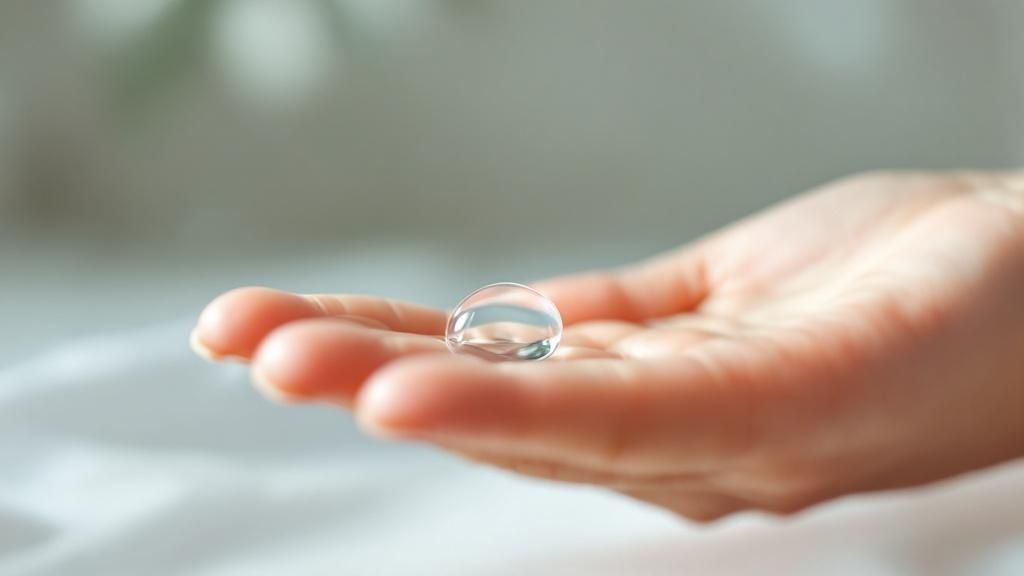
Beyond the brand or material, one of the biggest choices you'll make in the fight against dry eye discomfort is your lens replacement schedule. Deciding between daily disposables and monthly lenses can make or break your comfort, and for anyone with dry eyes, this decision is critical.
The main draw of a daily disposable lens is simple yet powerful: you start with a brand-new, sterile, and perfectly hydrated lens every single morning. This design completely sidesteps the gradual buildup of proteins and allergens from your own tears that can accumulate on monthly lenses. These deposits are a primary culprit for irritation, turning a once-comfortable lens into something that feels scratchy and dry by week's end.
The Case for Daily Lenses
For those of us prone to dryness, starting each day with a completely fresh lens is a game-changer. It removes so many variables. You don't have to worry about lingering debris from a rushed cleaning job or irritating residue from contact lens solutions. A fresh lens surface is inherently smoother and holds moisture better, giving you the best possible comfort right out of the pack.
Imagine a frequent traveler from nearby Carol Stream. Who wants to deal with lens cases and bottles of solution on the road? The sheer convenience of just tossing the lenses at night is a huge plus. This "grab-and-go" simplicity is a big reason why dailies have become so popular.
The greatest benefit of daily disposables for dry eyes is consistency. You get the best possible version of that lens every single day, without the progressive decline in comfort that can happen with a reusable lens.
Have Monthly Lenses Caught Up?
While daily disposables are often the go-to recommendation for dry eyes, monthly lenses have come a long way. Many modern monthly lenses are now crafted from advanced silicone hydrogels that let a remarkable amount of oxygen reach the eye.
Manufacturers have also rolled out some seriously sophisticated cleaning solutions. These do a much better job of stripping away stubborn deposits and rehydrating lenses overnight. When you stick to a diligent cleaning routine, today’s monthly lenses can offer fantastic comfort and are often a more budget-friendly choice. We dive deeper into this in our article on daily disposable vs monthly contact lenses and which fits your lifestyle in Glendale Heights.
Ultimately, the best choice for you comes down to a personal balance of eye health needs, lifestyle demands, and budget. Talking through these factors during your detailed eye exam in Glendale Heights is the surest way to land on the replacement schedule that will keep your eyes feeling great.
Why a Professional Fitting is a Game-Changer for Dry Eyes
Researching contact lenses online is a great place to start, but it's not the finish line. When you're dealing with something as tricky as chronic dry eye, what you read in a guide can only take you so far. The reality is that picking a lens off the shelf based on a brand name often ends in frustration and wasted money.
At iDoctor, we constantly see patients from Carol Stream and the surrounding suburbs who are just plain tired of the trial-and-error approach. A successful, comfortable fit hinges on a deep dive into your specific eye shape, tear film quality, and daily habits. This is where our high-tech, personalized approach really makes a difference—and why the short drive to our Glendale Heights office is an investment in your comfort.
What Really Happens During a Fitting
A professional fitting at our clinic is much more than just a prescription check. Think of it as a detailed diagnostic process where we play matchmaker between your eye and the perfect lens technology. We don't guess; we measure.
Our 30-minute detailed eye exams include:
- Precise Corneal Mapping: We use specialized instruments to create a detailed map of your cornea's unique curves. This is crucial for finding a lens that sits perfectly, stays stable, and feels comfortable all day.
- Advanced Tear Film Analysis: It's not just about how many tears you have, but their quality. Understanding the makeup of your tear film is the key to picking a material that works with your eyes, not against them.
- Lifestyle Assessment: We'll talk about your day-to-day life. How much screen time? What are your hobbies? This helps us choose a lens that can keep up with you and perform well in your most common environments.
A successful contact lens experience for someone with dry eyes isn't just about the lens itself; it's about the precision of the fit. An improperly fitted lens, even one made with the best materials, can disrupt the tear film and worsen dryness.
This meticulous process is what allows us to pinpoint the ideal lens for you. If you want to learn more about the specifics, we break it down in our guide on what to expect during a contact lens fitting and finding the right lenses for your eyes.
Don't let dry eyes stop you from enjoying the freedom of contact lenses. The right solution is out there, and it all starts with getting the right expert care.
Local FAQ: Your Questions About Contact Lenses in Glendale Heights
Do you accept my vision insurance for contact lenses?
Yes, we accept all major vision insurance plans at our Glendale Heights boutique. Our team is happy to help you understand and maximize your benefits for contact lens fittings, exams, and lens supplies. Just bring your insurance information to your appointment, and we'll handle the rest.
Why is iDoctor the best choice for a contact lens fitting for my dry eyes near Carol Stream?
Patients from Carol Stream trust iDoctor because of our personalized, high-tech approach. We go beyond a standard prescription and use high-resolution imaging to analyze your tear film and corneal shape. This allows us to recommend specialized lenses that other providers might not carry, ensuring a comfortable fit tailored to your specific dry eye needs.
Can I get a same-day appointment for a contact lens exam?
While our schedule can fill up quickly, we always do our best to accommodate urgent needs. We recommend calling our Glendale Heights office directly to check for any same-day availability for a contact lens exam.
If I get fitted for contact lenses, can I also browse for designer eyeglasses?
Absolutely! After your contact lens fitting, you are welcome to browse our curated collection of luxury eyewear. We carry top brands like Cartier, Gucci, and Tom Ford, as well as affordable favorites like Ray-Ban and Coach. We are a one-stop shop for all your vision needs in Glendale Heights.
At iDoctor in Glendale Heights, we believe clear, comfortable vision is possible for everyone, even those with dry eyes. Patients from Carol Stream and beyond trust us to combine advanced diagnostic technology with a curated selection of the world's best contact lenses to find the perfect fit.
Schedule your personalized contact lens fitting in Glendale Heights today.


